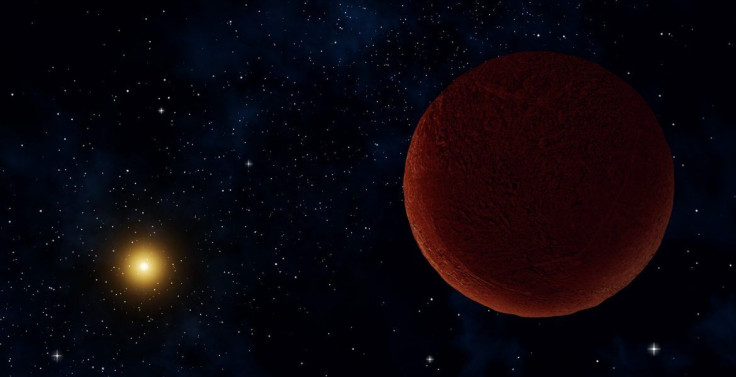Distant, Dim Object DeeDee May Soon Be Added To List Of Solar System's Dwarf Planets

In the farthest reaches of our solar system lies a tiny object that scientists now believe may be the latest edition to our family of dwarf planets. Observations made using the Atacama Large Millimeter/submillimeter Array (ALMA) in Chile have shown that this object, which goes by the informal name of DeeDee, is massive enough to be spherical — the criterion necessary for astronomers to consider it a dwarf planet.
“Far beyond Pluto is a region surprisingly rich with planetary bodies. Some are quite small but others have sizes to rival Pluto, and could possibly be much larger,” David Gerdes, a scientist with the University of Michigan and lead author of a paper detailing the observations, said in a statement. “Because these objects are so distant and dim, it’s incredibly difficult to even detect them, let alone study them in any detail. ALMA, however, has unique capabilities that enabled us to learn exciting details about these distant worlds.”
A dwarf planet, as defined by the International Astronomical Union, is a body that orbits the sun, is nearly round, and has enough mass to have cleared its orbit. Although there may be hundreds of dwarf planets in the dark and frozen regions of the Kuiper Belt beyond Neptune and the asteroid belt between Mars and Jupiter, scientists have so far officially identified five — Ceres, Pluto, Eris, Makemake and Haumea.
When DeeDee (officially known as 2014 UZ224) was discovered in the fall of 2016, it became the second most distant known trans-Neptunian object with a confirmed orbit, after the dwarf planet Eris. The fresh ALMA observations have shown that the potential dwarf planet is less than 400 miles across and is located about 92 astronomical units (1 AU, which is the mean distance between Earth and the sun, is roughly 93 million miles) from the sun. In comparison, Pluto — a dwarf planet about 1,475 miles across — is, on average, about 39.5 AUs from the sun.
When DeeDee was first spotted last year, astronomers were not sure of its size. They thought it might either be uncommonly large and dark object that reflected only a fraction of light that fell on it, or a relatively small and dark one. Both scenarios would have accounted for the optical data the scientists observed.
“ALMA picked it up fairly easily,” Gerdes said. “We were then able to resolve the ambiguity we had with the optical data alone.”
The fresh observations come just months after an international team of astronomers announced the discovery of 2015 RR245, a dwarf planet whose huge orbit in the Kuiper Belt takes it around the sun once in over 700 years.
RR245, roughly 435 miles across, was found using the Canada-France-Hawaii Telescope on Maunakea, Hawaii, and has one of the largest orbits of any dwarf planet. At the farthest point in its orbit, the dwarf planet lies at a distance of 7.4 billion miles from the sun, as compared to Earth’s farthest point of 94.5 million miles.
© Copyright IBTimes 2024. All rights reserved.





















